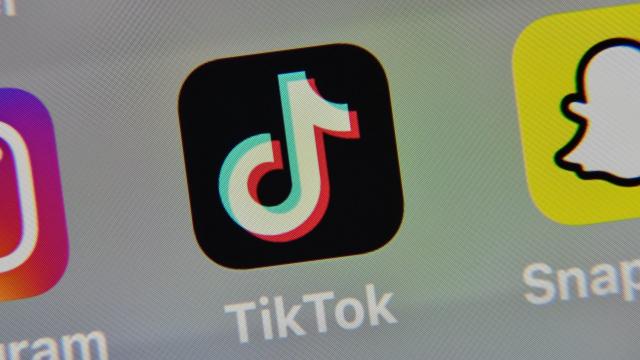If you follow the updates on various social platforms for long enough, you start to notice a particular pattern: a product designed for socialising mutating into an attention trap geared towards shopping. We’ve seen it with Instagram. We’ve seen it with Pinterest and Snapchat. So it was only a matter of time before consumerism took over the teen platform of choice, TikTok.
That time has come, according to a new Financial Times report citing some of the company’s advertiser partners that were briefed on some upcoming e-commerce features TikTok plans to roll out later this year.
The first feature would allow some select influencers to share links to their products of choice within their videos. If a user clicks the link and buys the product, then that influencer gets a certain cut of the profits. TikTok isn’t reinventing the wheel here: essentially what we’re talking about is affiliate links.
In some ways, this is just an expansion of what TikTok’s been teasing for more than a year. Back in late 2019, the company first started letting influencers link to a given shop or product within their bio. Then, in late 2020, the company rolled out a partnerships with Shopify and Teespring that allowed these same influencers link out to those stores within their videos.
Shopify and Teespring are fine, but they aren’t the be-all and end-all when it comes to online shopping: There’s beauty TikTokers that might want to link out to their gotta-have mascara on Sephora’s website, for example, or food TikTokers that might want to link out to banana slicers at a site where banana slicers are sold. Right now, it’s unclear who the upcoming features will be open to (the Financial Times just says “popular users”), but if it’s anything like TikTok’s previous products, it’s worth assuming that it’ll be open to the Addison Rae’s of the world before smaller-size influencers get the chance to hawk products on your feed.
Aside from this new in-video shopping feature, TikTok is also reportedly working on what can best be understood as QVC, but for teens: a livestreamed shopping channel where users will be able to buy products “in just a few taps.” The company is also reportedly working on giving brands the ability to show off product catalogues directly within the app itself. We’ve reached out to TikTok for comment on the impending updates, and will update here when we hear back.
If all of this sounds vaguely familiar, it might be because Instagram’s been working on many of these same features for more than a year. Way back in late 2018, the company introduced shoppable videos that allowed brands to link to products that were featured in-video,; the following year, that same feature was expanded to let influencers do the same. Towards the end of 2020, Instagram revamped its homepage to put more of a spotlight on these shopping features alongside its TikTok knockoff, Reels, before globally rolling out shopping on Reels just a few weeks later.
Considering how TikTok has been getting shamelessly copied by Instagram, seeing the reverse is kind of a nice change of pace. But the truth is, plenty of comparable features have been present on Douyin — TikTok’s Chinese counterpart — since 2019.
In other words, Instagram wasn’t being a trendsetter here, it was just reading the room: in East Asia, the lines between content and commerce have been getting fuzzier and fuzzier as time goes on. Meanwhile, the U.S. is seeing its own boom in so-called “social commerce” thanks, in part, to an ongoing pandemic that has shifted the bulk of our day-to-day shopping online. One report from analysts at eMarketer from earlier this month predicted that sales over social commerce will count for over $US36 ($47) billion dollars — a tiny fraction of total ecommerce sales, but a nearly 35% increase from last year and also good god, thirty six billion dollars.
The ongoing rivalry between Instagram and TikTok isn’t only about creating the most popular platform for teens n’ memes, but the most popular platform where those teens will spend cash. Some market researchers found that altogether, millenial and gen-z consumers have the potential to spend close to $US350 ($454) billion dollars per year.
Others predict that number is closer to $US3 ($4) trillion.
Major brands want a slice of that massively profitable pie, and most major social platforms want to recruit major brands because they depend on ad dollars to survive. We can chide Instagram for ripping off TikTok and vice versa, but as long as online shopping continues to churn out endless buckets of cash, the race to the bottom will keep on going.
